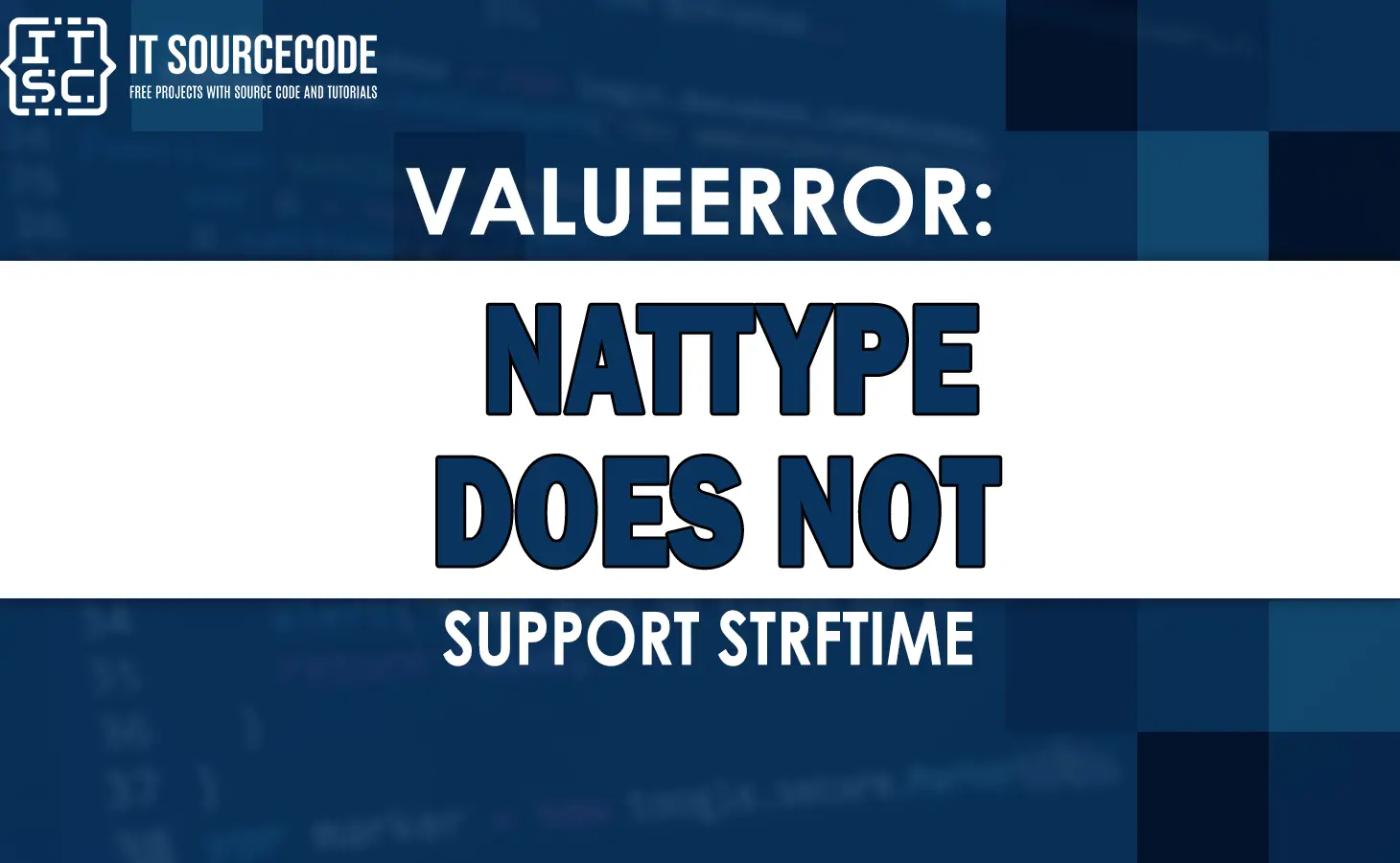This Valueerror: nattype does not support strftime error typically occurs when attempting to format a datetime object with the strftime method while using a NaT (Not-a-Time) value.
Understanding the ValueError nattype does not support strftime Error
The ValueError nattype does not support strftime error occurs when you attempt to format a datetime object using the strftime method, but the object contains a NaT value.
NaT is a special value used in pandas to represent missing or undefined datetime values.
The error message shows that the NaT value does not support the strftime method, which is used to format the date and time representation according to a specified format string.
Causes of the ValueError
The ValueError nattype does not support strftime error can be caused by several aspects, including:
- Presence of NaT Values
- Incorrect Formatting Code
- Outdated Python Version
Now that we have identified the possible causes, let’s move on the several solutions to resolve the ValueError.
How to Fix the Valueerror: nattype does not support strftime Error?
To solve the Valueerror: nattype does not support strftime, here are the following solutions you can apply.
Solution 1: Handling NaT Values Before Formatting
One way to fix the ValueError is to handle NaT values before attempting to format the datetime object.
By checking for the presence of NaT values and applying the correct logic, we can ensure that only valid datetime objects are passed to the strftime method.
For example:
import pandas as pd
def format_datetime_example(datetime_object):
if pd.isnull(datetime_object):
return "Unknown"
else:
return datetime_object.strftime("%Y-%m-%d %H:%M:%S")
# Usage example
datetime_example = pd.to_datetime("2023-06-08 10:30:00", errors="coerce")
datetime_format = format_datetime_example(datetime_example)
print(datetime_format)Output:
2023-06-08 10:30:00
In this example, the format_datetime_example function is designed to handle NaT values by returning a default string, such as “Unknown,” instead of attempting to format them.
By engaging the pd.isnull function from the pandas library, we can check if the datetime object is null or not.
If it is null (i.e., a NaT value), we return the desired default string. Otherwise, we can proceed with formatting the datetime object using strftime.
Solution 2: Converting NaT Values to a Valid Datetime
Another solution to solve the ValueError is by converting NaT values to a valid datetime object before performing any formatting operations.
This conversion can be accessed using the pd.to_datetime function from the pandas library.
For example:
import pandas as pd
def convert_nat_to_datetime_example(datetime_object_sample):
if pd.isnull(datetime_object_sample):
return pd.NaT
else:
return datetime_object_sample
# Usage example
datetime_value_format = pd.to_datetime("2023-06-08 01:30:23", errors="coerce")
converted_datetime_format = convert_nat_to_datetime_example(datetime_value_format)
formatted_datetime = converted_datetime_format.strftime("%Y-%m-%d %H:%M:%S")
print(formatted_datetime)Output:
2023-06-08 01:30:23
In this example, we define the convert_nat_to_datetime_example function, which checks for NaT values and returns pd.NaT to signify missing or undefined datetime values.
By converting NaT values to pd.NaT, we ensure that the datetime object passed to strftime is a valid one, preventing the ValueError from being raised.
Solution 3: Custom Date Formatting Function
To handle the ValueError in a more generalized aspect, we can create a custom date formatting function that incorporates the necessary checks and conversions.
This solution allows for flexibility and reusability in different parts of your codebase.
For example:
import pandas as pd
def formatted_example_datetime(datetime_value, format_string="%Y-%m-%d %H:%M:%S", default_value="Unknown"):
if pd.isnull(datetime_value):
return default_value
else:
return datetime_value.strftime(format_string)
# Usage example
datetime_value_sample = pd.to_datetime("2023-06-08 3:30:00", errors="coerce")
formatted_sample_datetime = formatted_example_datetime(datetime_value_sample, "%B %d, %Y")
print(formatted_sample_datetime)By providing sensible default values and utilizing the pd.isnull function, this custom function ensures smooth handling of NaT values and prevents the ValueError from occurring.
Solution 4: Using Pandas for Date Formatting
If you are working with pandas data structures, such as Series or DataFrame, an alternative solutions to avoid the ValueError is to utilize the date formatting capabilities provided by pandas itself.
The pandas library offers powerful functions for handling datetime objects and formatting them according to different patterns.
For example:
import pandas as pd
# Usage example
datetime_value_sample = pd.to_datetime("2023-06-08 02:38:23", errors="coerce")
example_formatted_datetime = datetime_value_sample.strftime("%Y-%m-%d %H:%M:%S")
print(example_formatted_datetime)Output:
2023-06-08 02:38:23
By utilizing the strftime function directly on the datetime object, we can format it according to the specified format string without encountering the ValueError.
Frequently Asked Questions (FAQs)
The ValueError: nattype does not support strftime error occurs when you try to format a datetime object that contains a NaT value using the strftime method.
You can handle NaT values before formatting by checking if the datetime object is null using the pd.isnull function.
Yes, you can convert NaT values to a valid datetime object by using the pd.to_datetime function.
Conclusion
In conclusion, the ValueError nattype does not support strftime error can be resolved by applying the different solutions in this article.
By handling NaT values before formatting, converting NaT values to valid datetime objects and utilizing custom date formatting functions.
Also, by understanding the causes and solutions provided in this article, you can confidently fixed the ValueError.

